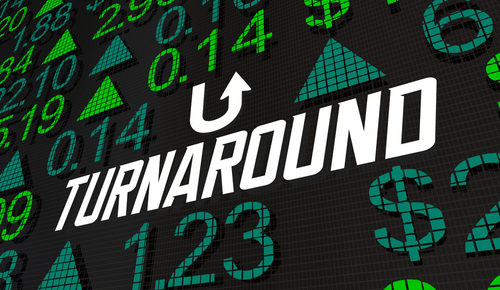The Good, the Bad and the Ugly About COVID-19
- The rapid onset of COVID-19 has had major implications on global health and wealth.
- Today, Nicholas Vardy shares the key takeaways – good, bad and ugly – that we should all understand.
Like many of you, I spent much of the weekend learning about the COVID-19 virus and its implications for financial markets.
It turns out that experts – from Bill Gates to the world’s leading epidemiologists – knew a global pandemic was inevitable.
Today, I want to provide three insights I gained on the current pandemic.
The Good…
My wife is a clinical psychologist. She taught me the critical idea of a “mental reframe” – an essential technique in cognitive behavioral therapy.
So here is my best shot.
Yes, this pandemic will result in hundreds of billions in financial losses… and perhaps millions of lives. That is terrible news.
But let’s look at it differently.
First, the good news is COVID-19 isn’t the equivalent of the Black Death, an epidemic that started in 1347. Over five years, the Black Death killed more than 20 million people in Europe – about one-third of the continent’s population.
Yes, COVID-19 is infectious. But 80% of those infected will suffer only flu-like symptoms.
Second, unlike many other viruses, COVID-19 presents with rather mild symptoms in children. As a parent of two preschoolers living in Central London, this is a relief.
It’s also, frankly, just dumb luck. And we may not get so lucky the next time.
The COVID-19 epidemic is a wake-up call to the entire planet.
Consider this…
The U.S. defense budget for 2020 is $718 billion. The Centers for Disease Control and Prevention’s budget – which addresses pandemics – is less than 1% of that. Yet a pandemic can easily be as deadly as a war.
You don’t start building an aircraft carrier the day you are attacked. You don’t buy a firetruck when your house catches on fire. In the same way, you don’t prepare for a pandemic after it starts.
COVID-19 is a wake-up call that our current approach has to change.
And in the grand scheme of things, we are lucky it did not take another Black Death to teach us that lesson.
The Bad…
“To a man with a hammer, everything is a nail.”
I focus on financial markets. So my first instinct is to look at the crisis through the mental model of a “financial panic.”
Hence my advice two weeks ago to “keep calm and carry on” – advice I would still give today,
This weekend, however, I realized I was using the wrong mental model.
The current crisis is not a financial panic.
Market sell-offs are driven by a collapse in the price of speculative assets, loose lending standards and an atmosphere of mania.
COVID-19 is a public health crisis – but one with economic and financial implications.
The right mental model to assess the risks comes from epidemiology.
It turns out the spread of viruses is easily modeled. And these models have been (sadly) all too accurate.
Alas, for many in the financial world, its results are counterintuitive.
That’s because epidemiology models rely on exponential growth – a concept humans are not wired to grasp.
Skeptics cite that the virus has killed “only” X number of people, compared with, say, cancer, suicides or car accidents that same day.
The problem is that these examples offer but a snapshot in time.
Exponential growth is what matters.
Here are the charts you need to pay attention to. They all tell a terrifying, exponential story.
There are two takeaways from this.
First, if the case numbers are not managed by “social distancing” or other measures, they will crush the healthcare system.
Second, even if the crisis is successfully managed, it will be extended further in time. This is not a two-week – or even two-month – problem.
Even in the best scenario, things will get a lot worse before they get better.
The Ugly…
Today, we are focused on the immediate public health crisis – and the impact on the global economy and financial markets.
Yet there is an ugly elephant in the room ignored by everyone.
Where the heck did the COVID-19 virus come from? And how can we prevent similar outbreaks in the future?
One answer shocked me.
It turns out that almost every viral outbreak in the last 20 years has come from the same place: China’s “wet markets.”
These are traditional Chinese markets where both dead and live animals are sold to eager Chinese consumers, as they have been for hundreds of years.
It’s a place where live chickens crap into the mouths of the ferrets below them. It’s where snakes slither from their cages and bite bat corpses next to them. Its where the blood, fluids and excrement of hundreds of different animal species mix.
Call me squeamish…
But the Chinese wet market is one of the most disgusting and dangerous cesspools on the planet.
Don’t believe me? Take a look at this video.
Are you shocked that Chinese wet markets are where most pandemic viruses come from?
China flaunts its bullet trains, bridges and skyscrapers. And naïve investors associate China with Shanghai’s futuristic skyline.
Yet, at the base of those skyscrapers, tens of millions of Chinese spread viruses from wet markets that are positively medieval.
So here is my question…
Why the heck hasn’t China banned wet markets?
The Chinese government routinely displaces tens of thousands of its citizens to make way for skyscrapers and infrastructure projects.
If there is ever a case for China using its authoritarian powers to shut something down, this is it.
The rest of the world has suffered enough.
About Nicholas Vardy
An accomplished investment advisor and widely recognized expert on quantitative investing, global investing and exchange-traded funds, Nicholas has been a regular commentator on CNN International and Fox Business Network. He has also been cited in The Wall Street Journal, Financial Times, Newsweek, Fox Business News, CBS, MarketWatch, Yahoo Finance and MSN Money Central. Nicholas holds a bachelor’s and a master’s from Stanford University and a J.D. from Harvard Law School. It’s no wonder his groundbreaking content is published regularly in the free daily e-letter Liberty Through Wealth.






